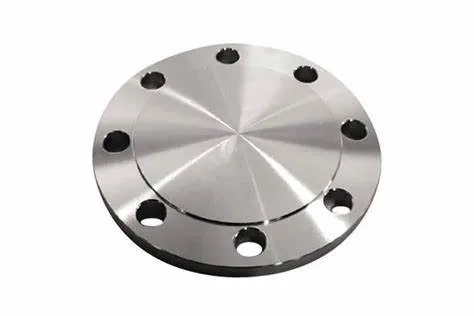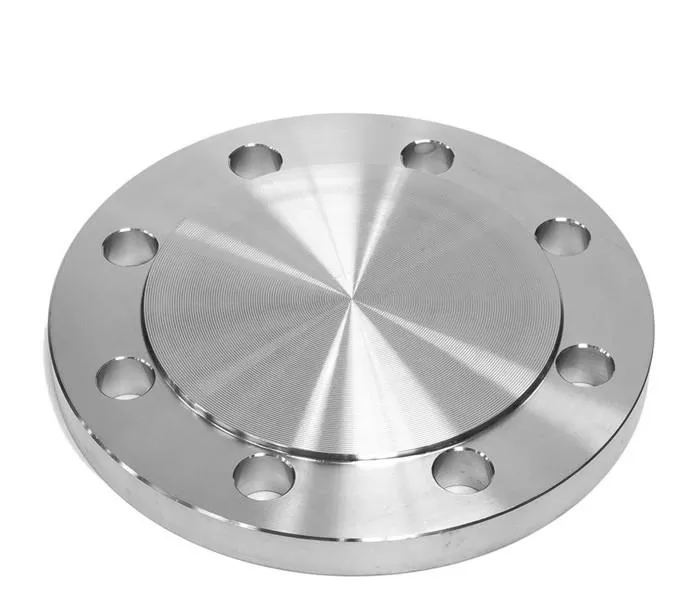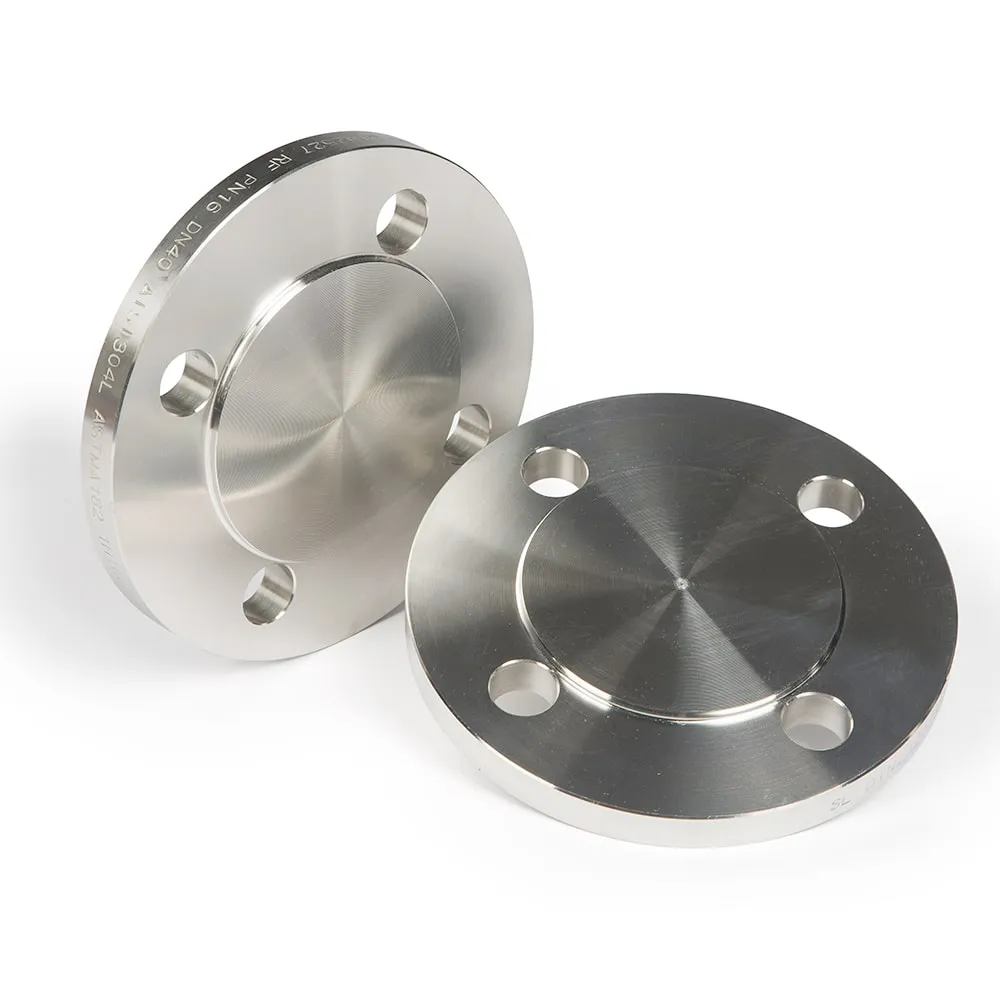General Introduction
Standard Compliance: ANSI B16.5 is a widely recognized American standard that specifies the dimensions, tolerances, materials, and pressure-temperature ratings for pipe flanges. The blind raised face forged carbon steel flange complies with this standard, ensuring interchangeability and compatibility in piping systems worldwide.
Function: It is a type of flange cover used to seal the end of a pipe, preventing the passage of fluids or gases. It serves to isolate a section of the piping system, facilitating maintenance, repair, or when a particular part of the system needs to be shut off completely.
Design and Structure
Blind Design: As a blind flange, it has no central hole. The solid face provides a complete seal at the end of the pipe.
Raised Face: The raised face feature provides a better sealing surface compared to a flat face. It has a raised circular area in the center that mates with a gasket to form a tight seal, enhancing the sealing performance and preventing leakage.
Forged Construction: Manufactured through forging, which gives the flange a dense and uniform internal structure. Forged flanges generally have better mechanical properties, such as higher strength and toughness, compared to cast flanges.
Dimensions and Specifications
Diameter: Available in a range of sizes from small to large diameters, typically from 1/2 inch to 24 inches.
Materials
Carbon Steel: The flange is made of carbon steel, which is a common and cost-effective material. Carbon steel offers good strength and durability, making it suitable for a wide range of applications. It can be further alloyed or heat-treated to meet specific performance requirements. Common carbon steel grades used for these flanges include A105, which has good mechanical properties and is widely used in the industry.
Pressure-Temperature Ratings
The ANSI B16.5 standard assigns specific pressure-temperature ratings to these flanges. For example, a flange rated for 150 pounds per square inch (psi) at room temperature may have a different allowable pressure at higher temperatures. It's crucial to select the appropriate flange with the correct pressure-temperature rating to ensure the safety and reliability of the piping system.
Applications
Industries: Widely used in various industries such as oil and gas, chemical processing, power generation, water treatment, and pharmaceuticals. In the oil and gas industry, it is used in refineries, pipelines, and offshore platforms. In chemical plants, it helps to isolate different sections of the piping system during maintenance or when handling different chemical substances.
Specific Uses: Commonly used in situations where a pipeline needs to be temporarily or permanently closed off, such as at the end of a branch line, during equipment maintenance, or when a section of the pipeline is being decommissioned.
-
Cangzhou Yulong Steel Co., Ltd.
-
Phone:
+86 13303177267 -
Email:
admin@ylsteelfittings.com
- English
- Arabic
- Italian
- Spanish
- Portuguese
- German
- kazakh
- Persian
- Greek
- French
- Russian
- Polish
- Thai
- Indonesian
- Vietnamese
- Zulu
- Korean
- Uzbek
- Hindi
- Serbian
- Malay
- Ukrainian
- Gujarati
- Haitian Creole
- hausa
- hawaiian
- Hebrew
- Miao
- Hungarian
- Icelandic
- igbo
- irish
- Japanese
- Javanese
- Kannada
- Khmer
- Rwandese
- Afrikaans
- Albanian
- Amharic
- Armenian
- Azerbaijani
- Basque
- Belarusian
- Bengali
- Bosnian
- Bulgarian
- Catalan
- Cebuano
- China
- China (Taiwan)
- Corsican
- Croatian
- Czech
- Danish
- Esperanto
- Estonian
- Finnish
- Frisian
- Galician
- Georgian
- Kurdish
- Kyrgyz
- Lao
- Latin
- Latvian
- Lithuanian
- Luxembourgish
- Macedonian
- Malgashi
- Malayalam
- Maltese
- Maori
- Marathi
- Mongolian
- Myanmar
- Nepali
- Norwegian
- Norwegian
- Occitan
- Pashto
- Dutch
- Punjabi
- Romanian
- Samoan
- Scottish Gaelic
- Sesotho
- Shona
- Sindhi
- Sinhala
- Slovak
- Slovenian
- Somali
- Sundanese
- Swahili
- Swedish
- Tagalog
- Tajik
- Tamil
- Tatar
- Telugu
- Turkish
- Turkmen
- Urdu
- Uighur
- Welsh
- Bantu
- Yiddish
- Yoruba

Write your message here and send it to us
Related News
-
Jul . 23, 2025Space-Saving Connection Mastery: How 1/2 Pipe Nipple’s 50mm Short Design Solves Dense Piping Installation Challenges?In the labyrinth of industrial machinery, where pipes weave through 200mm-wide gaps and every millimeter counts, the battle against cramped spaces often stalls projects.
-
Jul . 23, 2025Shale Gas Extraction Impact Resistance: How ASME B16.47 Flange's Hub-Thickened Design Passes Seismic Testing?In the high-stakes realm of shale gas extraction, where seismic activity and operational vibrations threaten pipeline integrity, the ASME B16.47 flange emerges as a critical safeguard.
















